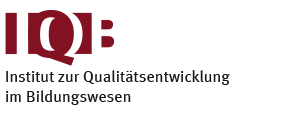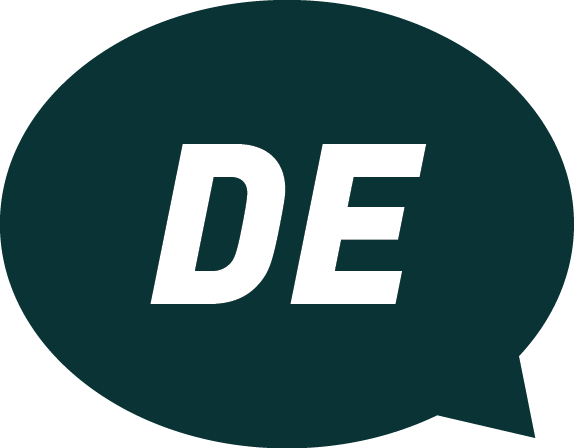StEG-Tandem: Optimising Study Periods at All-day Schools Through Cooperative Learning Activities

Inhaltsverzeichnis
Hinweise zur Nutzung der Daten
> Scientific Use Files beantragen
| Datensatz veröffentlicht am | 04.04.2022 |
|---|---|
| aktuelle Version verfügbar seit | 04.04.2022 |
| Erhebungszeitraum | 2017, 2018 |
| Stichprobe | Schüler*innen der Jahrgangsstufe 5 (N=245: Kontrollgruppe und N=301: Treatmentgruppe) aus Klassen (N=21: Kontrollgruppe bzw. N=23: Treatmentgruppe); Schüler*innen der Jahrgangsstufen 8 bis 10 (N=81: Mentor*innen); Eltern (N=398: Kontrollgruppe und N=226: Treatmentgruppe) |
| Erhebungseinheit | Eltern Schüler*innen |
| erfasste Kompetenzen | Mathematik, Englisch |
| Region | Hessen |
| Leitung | Fischer, Prof. Dr. Natalie Klieme, Prof. Dr. Eckhard |
| Datengebende | Klieme, Prof. Dr. Eckhard |
| Auftraggebende / Mittelgebende | Bundesministerium für Bildung und Forschung (BMBF) |
| Link zur Studie | https://www.dji.de/ueber-uns/projekte/projekte/studie-zur-entwicklung-von-ganztagsschulen-steg.html |
| Verwandte Studien | StEG 2005-9 (DOI: 10.5159/IQB_StEG_v1), StEG Systemmonitoring (DOI: 10.5159/IQB_StEG_Systemmonitoring_v2) |
| Zitationsvorschlag | Brisson, B., Heyl, K., Sauerwein, M., Theis, D., Dohrmann, J., Heer, J., Fischer N. & Klieme, E. (2022). StEG-Tandem: Konzeptionelle Weiterentwicklung von Lern- und Übungszeiten durch kooperative Lernformen (Version 1) [Datensatz]. Berlin: IQB – Institut zur Qualitätsentwicklung im Bildungswesen. http://doi.org/10.5159/IQB_StEG-Tandem_v1 |
| Datenrestriktion / Zugangshinweise | Die Daten der qualitativen Methoden sowie der Befragungen der Lehrkräfte und des pädagogischen Personals sind bislang (noch) nicht veröffentlicht. |
Projektbeschreibung
Im Rahmen der Studie StEG-Tandem arbeiteten fünf Integrierte Gesamtschulen in Ganztagsform, ein Forschungsteam und externe Praxisexpert*innen drei Schuljahre lang eng zusammen, um die Hausaufgabenbetreuung oder die Lernzeiten der teilnehmenden Schulen durch die Einführung kooperativer Lernformen weiterzuentwickeln. Schüler*innen der 5. Jahrgangsstufe wurden zur gemeinsamen Aufgabenbearbeitung angeregt (Peer Learning) und dabei von Mentor*innen aus der 8. bis 10. Jahrgangsstufe unterstützt (Peer Mentoring). Diese Entwicklungsmaßnahmen galten dem Ziel, die individuelle Förderung der Schüler*innen bei der Aufgabenbearbeitung zu stärken. Darüber hinaus sollten dadurch deren fachliche und soziale Kompetenzen gefördert werden.
StEG-Tandem ist eine Teilstudie der Studie zur Entwicklung von Ganztagsschulen (StEG) und wurde gemeinsam vom DIPF | Leibniz-Institut für Bildungsforschung und Bildungsinformation und der Universität Kassel durchgeführt. Der Erarbeitungsprozess sowie die anschließende Umsetzung der Konzepte zu kooperativem Lernen in Hausaufgabenbetreuung oder Lernzeiten wurden wissenschaftlich begleitet und evaluiert. Die Treffen der Arbeitsgruppen, bei denen Lehrkräfte, ein Forschungsteam und ein*e extern*e Expert*in zusammen schulspezifische Konzepte zu kooperativem Lernen erarbeiteten, wurden aufgezeichnet und transkribiert. Um die Wirksamkeit der Entwicklungsmaßnahmen zu untersuchen, wurden anhand eines Kohortendesigns mehrmals qualitative und quantitative Daten von Fünftklässler*innen mit und ohne Peer Mentoring in Hausaufgabenbetreuung oder Lernzeit erhoben. Auch deren Mentor*innen (Jahrgang 8 bis 10) wurden mehrfach mit qualitativen und quantitativen Methoden befragt. Darüber hinaus nahmen die Eltern und Lehrkräfte der 5. Jahrgangsstufe und Ganztagspersonal an Fragebogenerhebungen teil.
Die Daten der qualitativen Methoden sowie der Befragungen der Lehrkräfte und des pädagogischen Personals sind jedoch bislang nicht veröffentlicht. (Projekt/IQB)
Blank data sets
For a first overview of the data set and its variables, dummy data sets containing the variables used and the value labels relating to them are provided for download here.
- StEG-Tandem: Students questionnaire blank (SPSS)
- StEG-Tandem: Parents questionnaire blank (SPSS)
- StEG-Tandem: Mentors questionnaire blank (SPSS)
- StEG-Tandem: Smartphone questionnaire blank (SPSS)
Documentation
Here you can find further documentation:
- StEG-Forschungsergebnisse (German version)
Notes on the use of the data
How can the data from the parents and the student questionnaire be matched?
The parents of the fifth graders and the students themselves were surveyed independently of each other. Therefore, a direct matching is unfortunately not possible, but the information can be linked at the class level via the respective ID. The class ID is unique per year/for the control and the treatment group. For the same reason, there are also cases in which a child did not participate in the survey but its parents did - or vice versa. It should also be noted that in the treatment group, only the parents of the fifth graders were surveyed, while the parents of the mentors did not participate in the study.
How can the data from the mentor and the student questionnaire be matched?
Peer mentoring usually did not take place in the form of 1-to-1 tutoring and often also not in the form of fixed assignments. For these reasons, direct matching of mentors and students is unfortunately not possible. However, since the data contain information on days of participation in homework mentoring or study time in addition to the school ID, information can be linked on this basis in a doubly aggregated form, for example, as a grade point average of the mentors weighted according to days of participation.
What, if any, differences are there between the data/data structure on the one hand and StEG publications on the other hand?
In the StEG-Tandem guidelines (Brisson et al. 2017), a third survey of the mentors was planned. In the course of the implementation, however, the decision was made not to conduct this, which is why there are "only" two data collection points on the mentors. In addition, the sample sizes reported by Brisson et al. (2019) and those reported above, those documented in the scale manuals, and those reproducible from the usable data do not match in a few cases. This applies to the parents and student questionnaires and was caused by measures taken during data preparation, in particular the removal of persons without a valid declaration of consent.
What information does the undocumented variable “date_FDZ” in the smartphone dataset contain?
In the course of the data preparation, the variable “date” was anonymised, as it contains potentially sensitive data in the form of date and time. However, in order to still be able to make the information available to SUF users, a variable “date_FDZ” was created that represents the number of days passed since May 2nd, 2017.
Literature
Selected literature is listed  here (as of February 2022).
here (as of February 2022).
2022
Brisson, Brigitte, Heyl, Katrin, Sauerwein, Markus, Theis, Desiree, Dohrmann, Julia, Heer, Jana, Fischer Natalie & Klieme, Eckhard. (2022). StEG-Tandem: Konzeptionelle Weiterentwicklung von Lern- und Übungszeiten durch kooperative Lernformen (Version 1) [Datensatz]. Berlin: IQB - Institut zur Qualitätsentwicklung im Bildungswesen. https://doi.org/10.5159/IQB_StEG-Tandem_v1
2021
Kielblock, S., Arnoldt, B., Fischer, N., Gaiser, J. M. & Holtappels, H. G. (Hrsg.). (2021). Individuelle Förderung an Ganztagsschulen. Forschungsergebnisse der Studie zur Entwicklung von Ganztagsschulen (StEG) (Studien zur ganztägigen Bildung 1. Auflage). Weinheim: Beltz Juventa. Verfügbar unter http://www.content-select.com/index.php?id=bib_view&ean=9783779955573
2020
Kielblock, S. & Theis, D. (2020). Potenziale der Ganztagsschule - aktuelle Befunde der Studie zur Entwicklung von Ganztagsschulen (StEG). Forum Jugendhilfe, (1), 26–30. Zugriff am 03.01.2022. Verfügbar unter https://www.pedocs.de/frontdoor.php?source_opus=23156
2019
Brisson, B. M., Sauerwein, M. N., Heyl, K. & Theis, D. (2019). StEG-Tandem: Eine Schulentwicklungsstudie zur Einführung von kooperativen Lernformen in Hausaufgabenbetreuung bzw. Lernzeiten an Ganztagsschulen. Hintergrund, Konzeption und Ergebnisse. In S. Maschke, G. Schulz-Gade & L. Stecher (Hrsg.), Hausaufgaben und Lernzeiten pädagogisch sinnvoll gestalten. Aktuelle Entwicklungen und Diskussionslinien (Jahrbuch Ganztagsschule, 2019/2020, 1. Aufl., Bd. 20, S. 121–138). Frankfurt am Main: Debus Pädagogik; Wochenschau Verlag.
Konsortium der Studie zur Entwicklung von Ganztagsschulen (Hrsg.). (2019). Individuelle Förderung: Potenziale der Ganztagsschule. Frankfurt am Main: Das Konsortium der Studie zur Entwicklung von Ganztagsschulen (StEG). https://doi.org/10.25656/01:19109
Sauerwein, M. & Heer, J. (2019). „es ist sozusagen auch nur EIN Beispiel, wie das umgesetzt wurde“. Sozial Extra, 43(4), 271–275. https://doi.org/10.1007/s12054-019-00198-x
2017
Brisson, B. M., Heyl, K., Sauerwein, M. N., Theis, D. & Fischer, N. (2017). Leitfaden StEG-Tandem. Konzeptuelle Weiterentwicklung von Hausaufgabenbetreuung und Lernzeiten (DIPF | Leibniz-Institut für Bildungsforschung und Bildungsinformation (DIPF), Hrsg.) (Studie zur Entwicklung von Ganztagsschulen). Frankfurt am Main: DIPF | Leibniz-Institut für Bildungsforschung und Bildungsinformation (DIPF). Zugriff am 03.01.2022. Verfügbar unter https://www.pedocs.de/volltexte/2018/15098/pdf/Leitfaden_STEG-Tandem.pdf https://doi.org/10.25656/01:15098
Heyl, K. & Fischer, N. (2017). Wissenschafts-Praxis-Transfer an Ganztagsschulen. (DIPF | Leibniz-Institut für Bildungsforschung und Bildungsinformation (DIPF), Hrsg.) (DIPF informiert 25 (2)). Frankfurt am Main. Verfügbar unter https://dipfblog.com/2017/12/19/qualitaet-in-der-ganztagsschule-wie-wissenschaft-und-praxis-zusammenarbeiten/#more-1668

